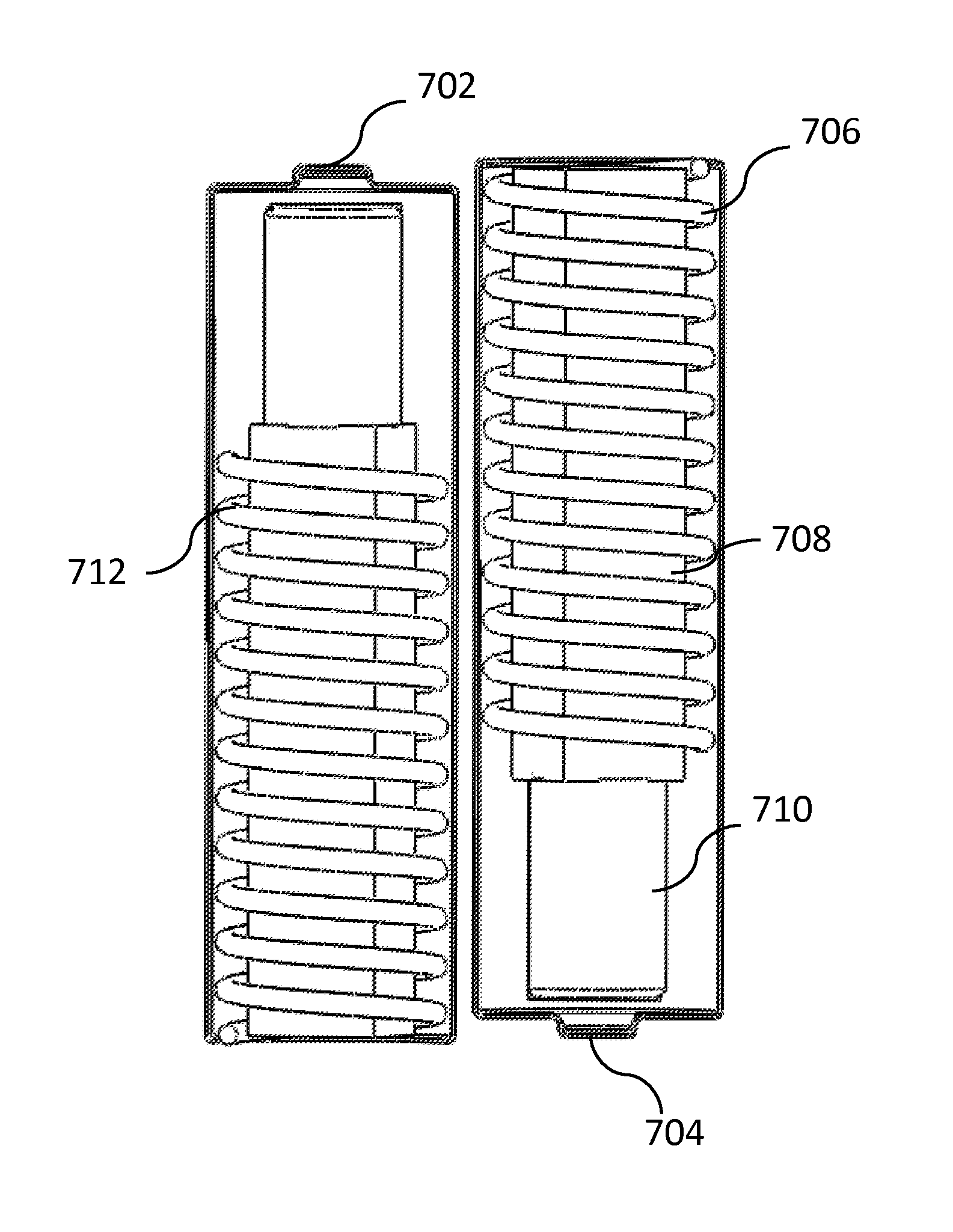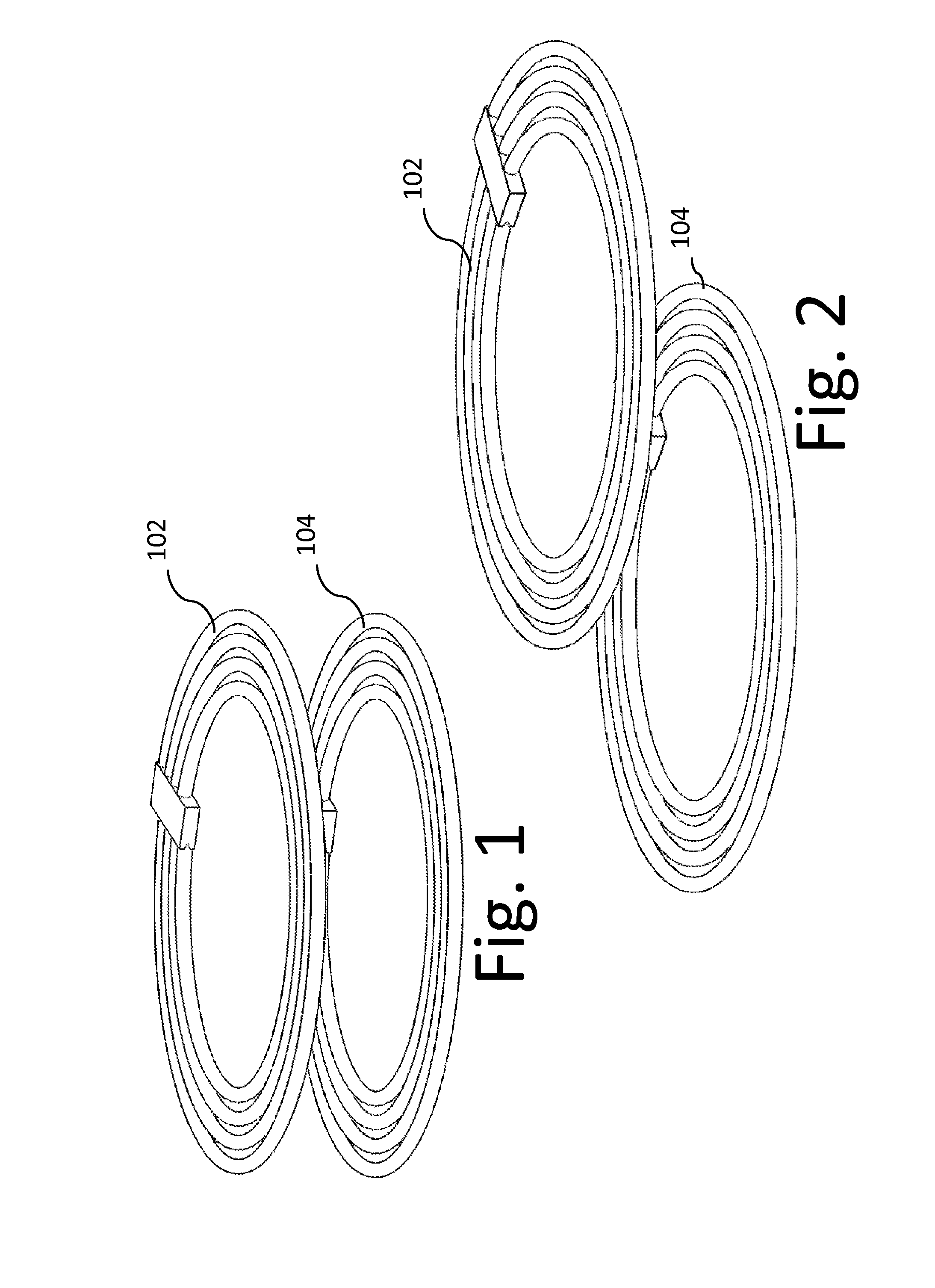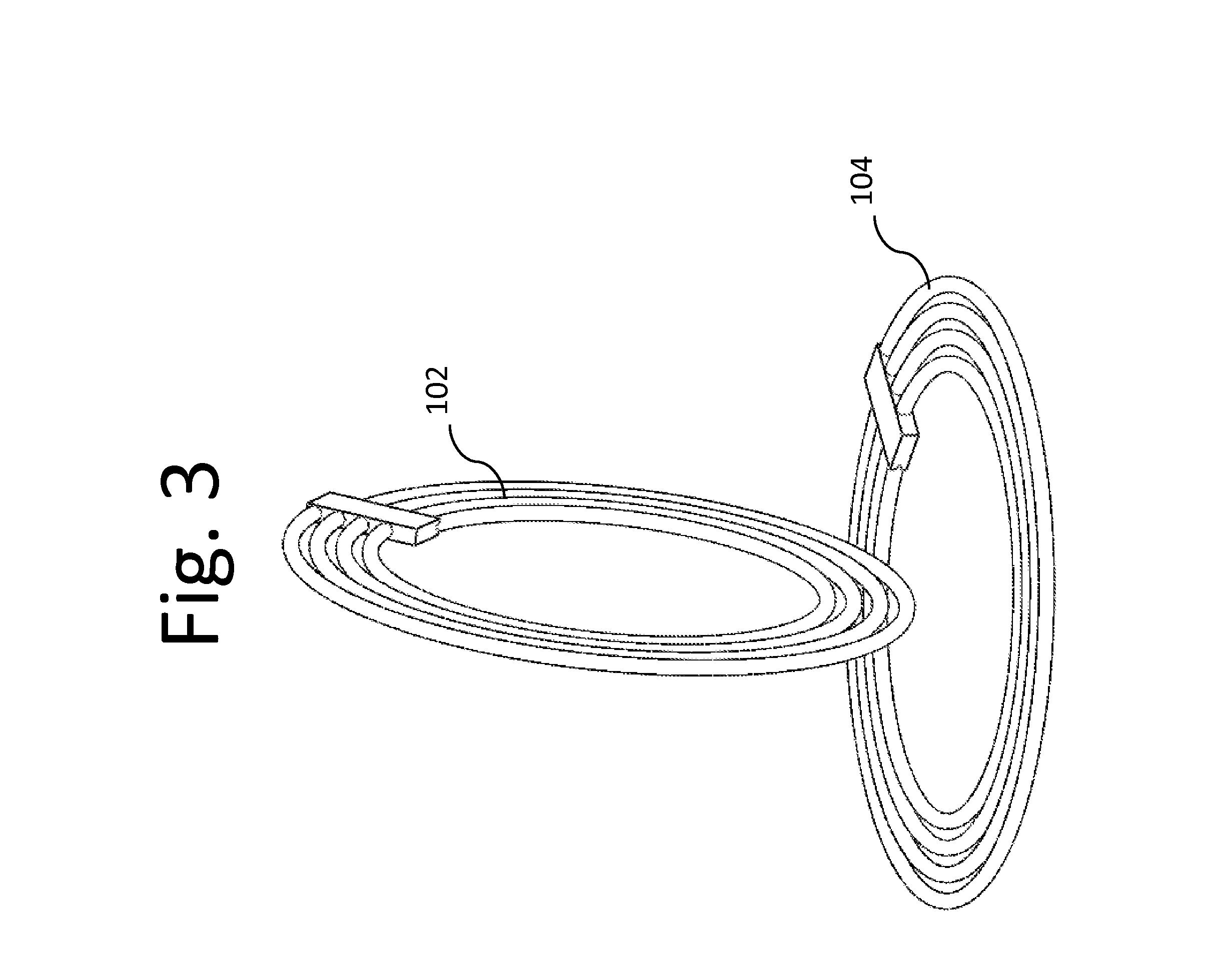Wireless energy transfer for rechargeable batteries
a rechargeable battery and wireless technology, applied in the direction of transformers, inductances, transportation and packaging, etc., can solve the problem that wireless enabled batteries may not be able to receive sufficient energy, and achieve the effect of low coupling
- Summary
- Abstract
- Description
- Claims
- Application Information
AI Technical Summary
Benefits of technology
Problems solved by technology
Method used
Image
Examples
Embodiment Construction
Wireless Battery Configurations
[0021]Resonators and electronics may be integrated or located next to batteries enabling wireless energy transfer to the batteries allowing wireless charging of the battery packs. With the addition of resonators and control circuitry, batteries and battery packs may wirelessly capture energy from a source and recharge without having to be precisely positioned in a charger. The wireless batteries and battery packs may be wirelessly recharged inside the host device from an external wireless power source without requiring that the device be physically plugged into an external energy supply.
[0022]FIG. 6 shows one example of a wireless battery comprising a magnetic resonator. The example battery comprises a resonator coil 606 wrapped around an optional block of magnetic material 608. The block of magnetic material 608 may be hollow and may house power and control circuitry (not shown) and optionally a rechargeable battery 604 which may be recharged by the e...
PUM
 Login to View More
Login to View More Abstract
Description
Claims
Application Information
 Login to View More
Login to View More - R&D
- Intellectual Property
- Life Sciences
- Materials
- Tech Scout
- Unparalleled Data Quality
- Higher Quality Content
- 60% Fewer Hallucinations
Browse by: Latest US Patents, China's latest patents, Technical Efficacy Thesaurus, Application Domain, Technology Topic, Popular Technical Reports.
© 2025 PatSnap. All rights reserved.Legal|Privacy policy|Modern Slavery Act Transparency Statement|Sitemap|About US| Contact US: help@patsnap.com



